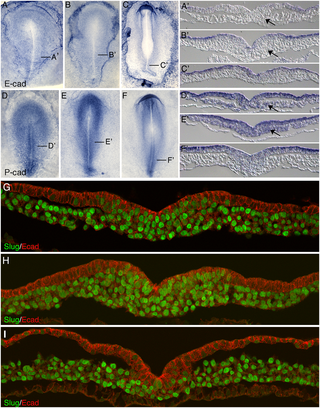User:Z5076466
| 2017 Project Groups | |||||
|---|---|---|---|---|---|
| Group 1 | Group 2 | Group 3 | Group 4 | Group 5 | Group 6 |
| Mark Hill - Lab 1 page | |||||
Here is the Student Page demonstration page I showed in the Practical class.
Use this page to practice editing and don't forget to add a topic to the 2017 Group Project 3 page.
Peer Review
Group 4:
Strengths:
• Authors of the wiki page have covered a variety of topics regarding eye development. It was great how the authors have included a general overview of eye development followed by a description of specific components within the eye, this definitely helped add depth to your wiki page was also satisfying criteria 1 of the assessment outline.
• The authors of the page have also included a number of images and tables to help present information in a more clear and concise manner. The use of a table to describe the stages of eye development was excellent as it helped simplify the entire process (criteria 2).
• It was great to see hand drawn diagrams within the wiki page. These diagrams helped simplify the overall anatomy of the eye to audiences who may not have a background in science, thus it is excellent that the page focuses on teaching at the peer level (criteria 4).
• It is also great that the authors have included a glossary to help define words which may not be familiar with all audiences.
Areas of improvement:
• To improve, the authors may have included a greater number of images whilst also including videos. More images may have been included under the heading “development of the eye components” to help reinforce the information already included. In addition, certain subheadings under this heading may include a greater description. For example, the subheading “Iris” may include a greater description of how the iris comes to develop. In addition, the authors of this wiki page may have also included videos as another visual tool to help explain certain processes described.
• In addition, it appears that certain areas of the wiki page do not include references to cite certain portions of information included. For example, the section about the anatomy of the eye has utilized a small number of references. In order to completely satisfy criteria 3 of this assessment, authors may wish to correctly cite information included within this section.
• The authors of the wiki page may wish to conduct further research into the subheading “congenital anomalies”. In doing so, a possible area that may be researched is treatment currently available to tackle these anomalies (for example different types of stem cell research being conducted” (criteria 5).
Group 6:
Strengths:
• The authors of this wiki page have included a variety of topics relevant to the development of the cerebellum. Topics range from the normal anatomy of the cerebellum, abnormalities, and the normal developmental process to animal models. Thus it is evident that criteria 1 has been satisfied which is excellent!
• A broad variety of tables and images have been utilized within this wiki page which is another excellent feature that has been included. Not only has this enhanced the presentation of the page, but the images serve as a visual aid in assisting in the explanation of certain concepts to peers (particularly those who are visual learners) (criteria 2 and 4 satisfied). For example the use of images was utilized to help simplify the explanation regarding the vesicles that development.
• It also appears that authors have included a broad variety of references in-text to cite all information utilized. Most source utilized appear to be recent and all have been correctly cited (criteria 3).
• The authors of this page have also explored evidence of significant research relating to basic and applied sciences that extends beyond the formal teaching activities (criteria 5) by exploring avenues including animal models and how the use of animal models have contributed to our understanding of the cerebellum. Authors of the page have also explored abnormalities of cerebellar development which was excellent
Areas of improvement:
• In order to improve, authors may wish to expand on different animal models utilized.
• The authors of this wiki page may also wish to utilize videos as another visual tool to aid in the presentation of content included.
• Another area of improvement would be to cite sources that are of a more recent date, rather than citing sources from the 1970s. The reason being is that such sources may include information that is currently outdated, thus the page may be providing inaccurate information about cerebellar development.
• Authors of the page may have also covered certain topics in greater depth. For example the heading titled “Cell signaling in cerebellar development” may have been subdivided into different types of genes and signaling factors involved in cerebellar development. Authors may then elaborate on each gene/signaling factor. This will help enhance presentation whilst also improving the readability of the information presented.
